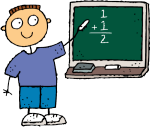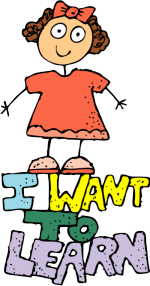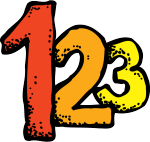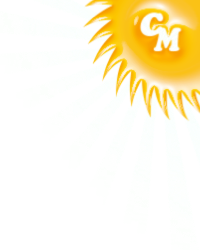- OVERVIEWWe are learning Math through a variety of strategies: during Calendar Routines, using hands-on activities and manipulatives, through integrative units and subjects.

Math homework will be sent home the day the lesson was taught. Please review Homework expectations on the Homework page. - CURRICULUM
"Math"
Chapter# 1
Chapter 1: Represent, Count, and Write Numbers 0 to 5
1.1 Hands On: Model and Count 1 and 2
1.2 Count and Write 1 and 2
1.3 Hands On: Model and Count 3 and 4
1.4 Count and Write 3 and 4
Mid-Chapter Checkpoint
1.5 Hands On: Model and Count 5
1.6 Count and Write 5
1.7 Hands On: Algebra • Ways to Make 5
1.8 Hands On: Count and Order to 5
1.9 Problem Solving: Understand 0
1.10 Count and Write 0
Chapter 1 Review/Test
Performance Task
Chapter# 2
Chapter 2: Compare Numbers to 5
2.1 Hands On: Same Number
2.2 Hands On: Greater Than
2.3 Hands On: Less Than
Mid-Chapter Checkpoint
2.4 Problem Solving: Compare by Matching Sets to 5
2.5 Compare by Counting Sets to 5
Chapter 2 Review/Test
Performance Task
Chapter# 3
Chapter 3: Represent, Count, and Write Numbers 6 to 9
3.1 Hands On: Model and Count 6
3.2 Count and Write 6
3.3 Hands On: Model and Count 7
3.4 Count and Write 7
Mid-Chapter Checkpoint
3.5 Hands On: Model and Count 8
3.6 Count and Write 8
3.7 Hands On: Model and Count 9
3.8 Count and Write 9
3.9 Problem Solving: Numbers to 9
Chapter 3 Review/Test
Performance Task
Chapter# 4Chapter 4: Represent and Compare Numbers to 10
4.1 Hands On: Model and Count 10
4.2 Count and Write 10
4.3 Hands On: Algebra • Ways to Make 10
4.4 Count and Order to 10
Mid-Chapter Checkpoint
4.5 Problem Solving: Compare by Matching Sets to 10
4.6 Compare by Counting Sets to 10
4.7 Compare Two Numbers
Chapter 4 Review/Test
Performance TaskChapter # 5
Chapter 5: Addition
5.1 Problem Solving: Act Out Addition Problems
5.2 Addition Expressions
5.3 More Addition Expressions
5.4 Hands On: Algebra: Model and Draw Addition Problems
Mid-Chapter Checkpoint
5.5 Algebra: Write Addition Sentences for 10
5.6 Algebra: Write Addition Sentences
5.7 Algebra: Write More Addition Sentences
5.8 Hands On: Algebra • Number Pairs to 5
5.9 Hands On: Algebra • Number Pairs for 6 and 7
5.10 Hands On: Algebra • Number Pairs for 8
5.11 Hands On: Algebra • Number Pairs for 9
5.12 Hands On: Algebra • Number Pairs for 10
Chapter 5 Review/Test
Performance Task
Chapter# 6
Chapter 6: Subtraction
6.1 Problem Solving: Act Out Subtraction Problems
6.2 Subtraction Expressions
6.3 More Subtraction Expressions
6.4 Hands On: Algebra • Model and Draw
Subtraction Problems
Mid-Chapter Checkpoint
6.5 Algebra: Write Subtraction Sentences
6.6 Algebra: Write More Subtraction Sentences
6.7 Hands On: Algebra • Addition and Subtraction
Chapter 6 Review/Test
Performance Task
Chapter# 7
Chapter 7: Represent, Count, and Write 11 to 19
7.1 Hands On: Model and Count 11 and 12
7.2 Count and Write 11 and 12
47.3 Hands On: Model and Count 13 and 14
7.4 Count and Write 13 and 14
7.5 Hands On: Model, Count, and Write 15
7.6 Problem Solving: Use Numbers to 15
Mid-Chapter Checkpoint
7.7 Hands On: Model and Count 16 and 17
7.8 Count and Write 16 and 17
7.9 Hands On: Model and Count 18 and 19
7.10 Count and Write 18 and 19
Chapter 7 Review/Test
Performance Task
Chapter# 8
Chapter 8: Represent, Count, and Write 20 and Beyond
8.1 Hands On: Model and Count 20
8.2 Count and Write 20
8.3 Count and Order to 20
8.4 Problem Solving: Compare Numbers to 20
Mid-Chapter Checkpoint
8.5 Count to 50 by Ones
8.6 Count to 100 by Ones
8.7 Count to 100 by Tens
8.8 Count by Tens
Chapter 8 Review/Test
Performance Task
Chapter# 9
Chapter 9: Identify and Describe Two-Dimensional Shapes
9.1 Identify and Name Circles
9.2 Describe Circles
9.3 Identify and Name Squares
9.4 Describe Squares
9.5 Identify and Name Triangles
9.6 Describe Triangles
Mid-Chapter Checkpoint
9.7 Identify and Name Rectangles
9.8 Describe Rectangles
9.9 Identify and Name Hexagons
9.10 Describe Hexagons
9.11 Hands On: Algebra • Compare Two-Dimensional Shapes
9.12 Problem Solving: Draw to Join Shapes
Chapter 9 Review/Test
Performance Task
Chapter# 10
Chapter 10: Identify and Describe three Dimensional Shapes
10.1 Three-Dimensional Shapes
10.2 Hands On: Identify, Name, and Describe Spheres
10.3 Hands On: Identify, Name, and Describe Cubes
10.4 Hands On: Identify, Name, and Describe Cylinders
10.5 Hands On: Identify, Name, and Describe Cones
10.6 Problem solving: Draw Two and Three Dimensional Shapes
10.7 Above and Below
10.8 Beside and Next To
10.9 In Front Of and Behind
Chapter 10 Review/Test
Performance Task
Chapter# 11
Chapter 11 Measurement
11.1 Hands On: Compare Lengths
11.2 Hands On: Compare Heights
11.3 Problem Solving: Direct Comparison
Mid-Chapter Checkpoint
11.4 Hands On: Compare Weights
11.5 Length, Height, and Weight
Chapter 11 Review/Test
Performance Task
Chapter# 12
Chapter 12 Classifying and Data
12.1 Hands On: Algebra • Classify and Count by Color
12.2 Hands On: Algebra: Classify and Count by Shape
12.3 Hands On: Algebra • Classify and Count by Size
Mid-Chapter Checkpoint
12.4 Make a Concrete Graph
12.5 Read a Concrete Graph
12.6 Problem Solving: Sort and Count
Chapter 12 Review/Test
Performance Task - STANDARDSThe Mathematics standards prepare Alaska students to be competitive on the national and world stage. These standards are a set of specific, rigorous expectations that build students’ conceptual understanding, mathematical language, and application of processes and procedures coherently from one grade to the next so all students will be prepared for post-secondary experiences. The focus areas for each grade level and each conceptual category narrative establish a depth of knowledge as opposed to a breadth of knowledge across multiple standards in each grade level or content area.
 The standards for Mathematics stress both conceptual understanding and procedural skills to ensure students learn and can apply the critical information needed to succeed at each level. In Kindergarten, the standards follow successful international models and recommendations by focusing Kindergarten work on the number core: learning how numbers correspond to quantities, and learning how to put numbers together and take them apart (the beginnings of addition and subtraction).
The standards for Mathematics stress both conceptual understanding and procedural skills to ensure students learn and can apply the critical information needed to succeed at each level. In Kindergarten, the standards follow successful international models and recommendations by focusing Kindergarten work on the number core: learning how numbers correspond to quantities, and learning how to put numbers together and take them apart (the beginnings of addition and subtraction).
Counting and Cardinality- Know number names and the count sequence.
- Count to tell the number of objects.
- Compare numbers.
Operations and Algebraic Thinking
- Understand addition as putting together and adding to, and understand subtraction as taking apart and taking from.
- Identify and continue patterns.
Number and Operations in Base Ten- Work with numbers 11–19 to gain foundations for place value.
Measurement and Data- Describe and compare measurable attributes.
- Classify objects and count the number of objects in categories.
- Work with time and money.
Geometry- Identify and describe shapes.
- Analyze, compare, create, and compose shapes.
(http://www.eed.state.ak.us/tls/assessment/2012AKStandards.html )
